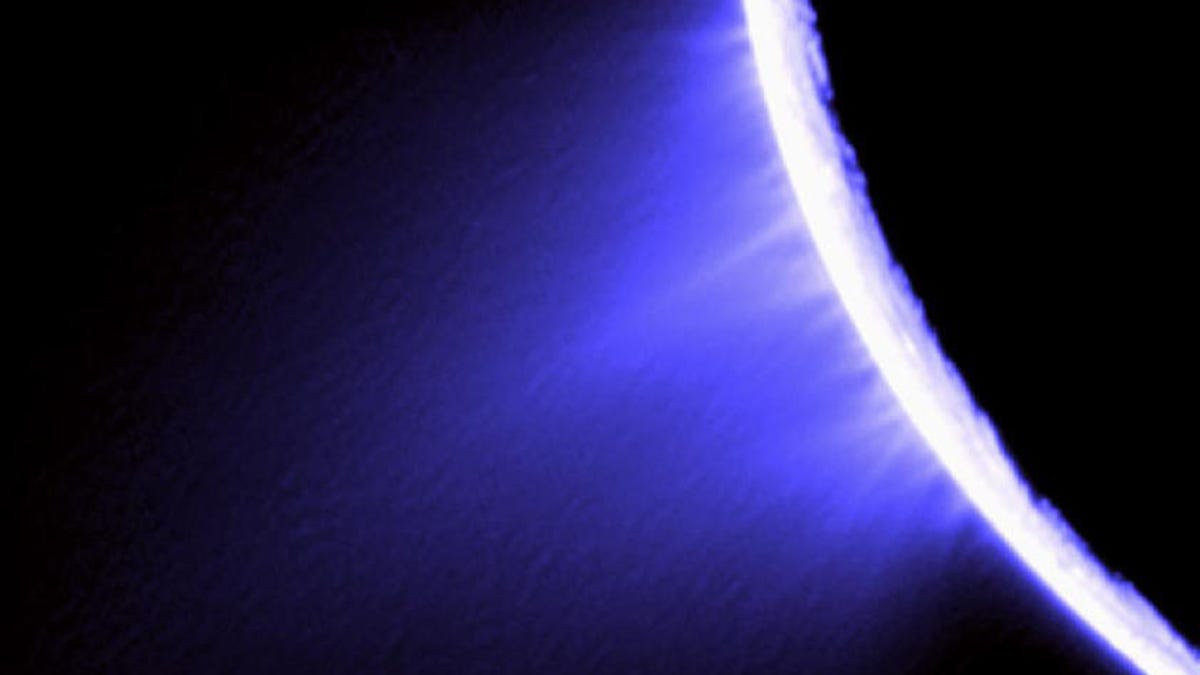Saturn moon's hidden ocean could be a good place for a warm bath
Scientists say a watery ocean beneath the icy shell of Enceladus may be much closer to the surface at some points than previously thought.

The closer we look at Saturn's icy moon Enceladus, the more the data seems to thaw the notion that it's just a big, striped snow ball.
A new study based on data from NASA's Cassini spacecraft finds that temperatures just below the icy surface of its south pole are warmer than expected. Scientists say this could mean that the world's subsurface ocean could be closer to the surface than expected.
"This cannot be explained only as a result of the Sun's illumination and, to a lesser extent, Saturn's heating so there must be an additional source of heat," Alice Le Gall from the Université Versailles Saint-Quentin in France said in a release. Le Gall is part of the Cassini radar team and the lead author of the study published Monday in Nature Astronomy.
The trademark "tiger stripes" seen on the moon's surface are likely a clue to what's going on below. The stripes are actually large fractures in the icy crust where mysterious plumes, perhaps a mix of salt and soda water, erupt through the ice in cascading sheets.
"The thermal anomaly we see at microwave wavelengths is especially pronounced over three fractures that are not unlike the tiger stripes, except that they don't seem to be the source of jets at the moment," Le Gall says.
The researchers speculate that they could be looking at dormant fractures lying just above a warm, unseen underground sea around the south pole. The new and astounding part is that the hidden ocean could be just a little over a mile (2 km) beneath the surface, compared to around 12 miles (20 km) on average elsewhere on Enceladus.
"If Enceladus' underground sea is really as close to the surface as this study indicates, then a future mission to this moon carrying an ice-penetrating radar sounding instrument might be able to detect it," says Nicolas Altobelli of the European Space Agency.
NASA has already flown Cassini itself through one of the plumes, something it wasn't necessarily designed for, so it wasn't able to pick up everything in the spray, like evidence of life, for example.
"What is the warm underground ocean really like and could life have evolved there?" said NASA Cassini Project Scientist Linda Spilker in a statement. "These questions remain to be answered by future missions to this ocean world."
The space agency is already planning to send a mission to Jupiter's intriguing moon Europa, also believed to be hiding an ocean. This new finding suggests it might be worth expanding the itinerary to Enceladus, and packing a real long ice drill for the trip.
Solving for XX: The industry seeks to overcome outdated ideas about "women in tech."
Crowd Control: A crowdsourced science fiction novel written by CNET readers.

